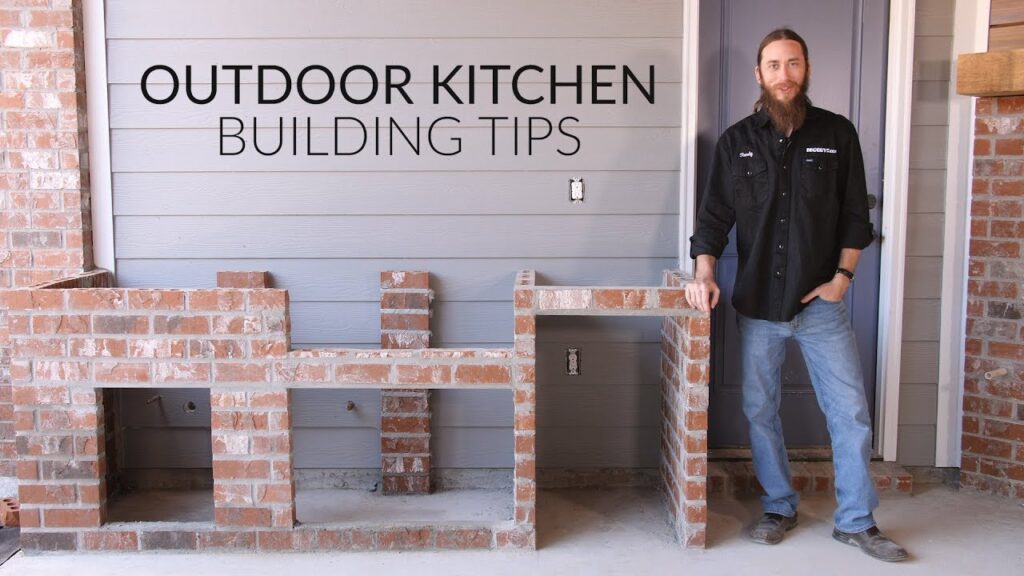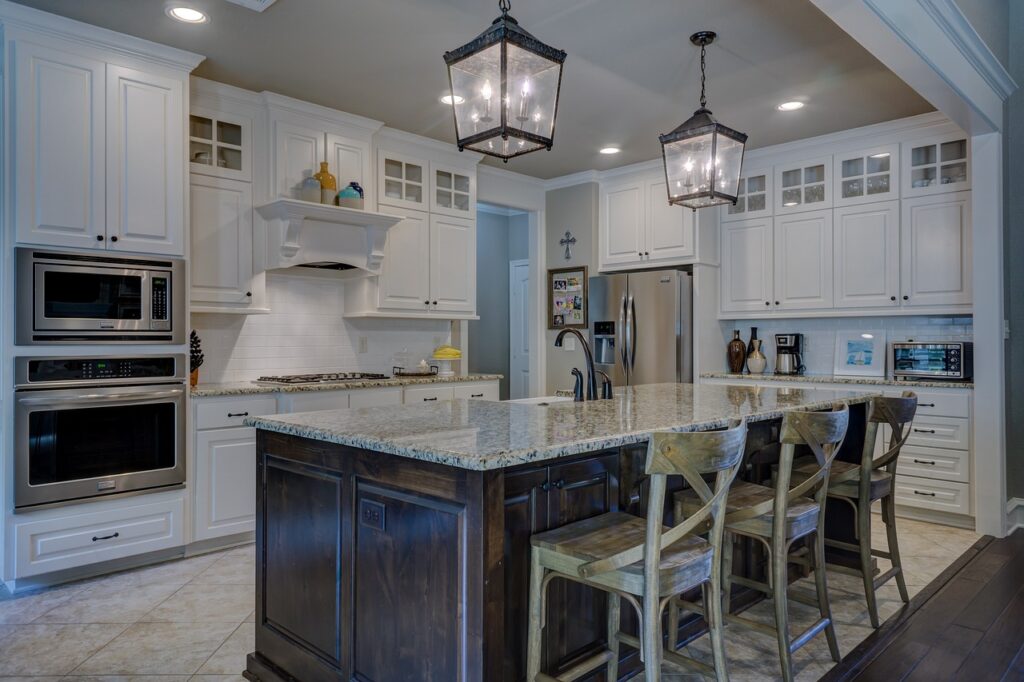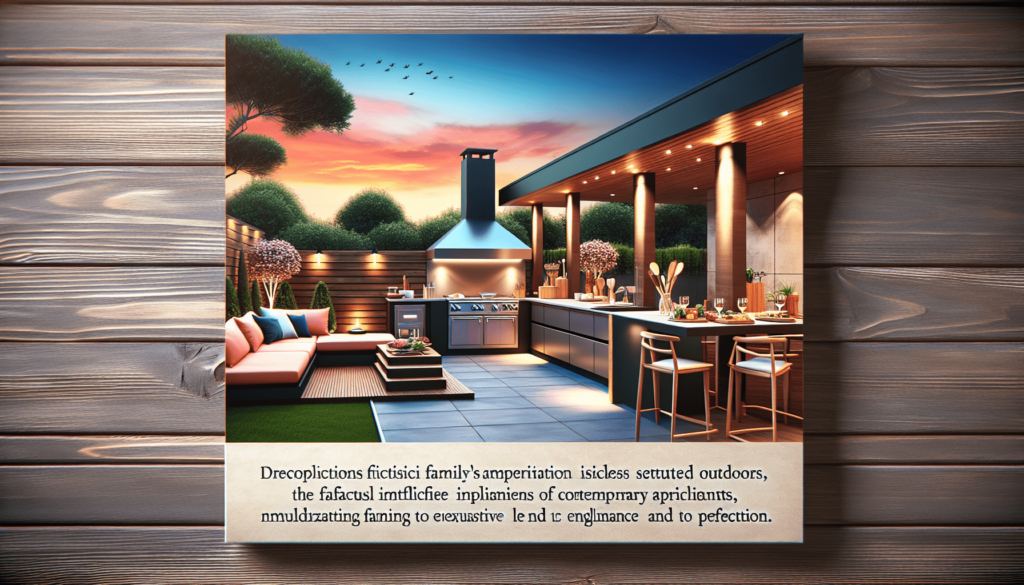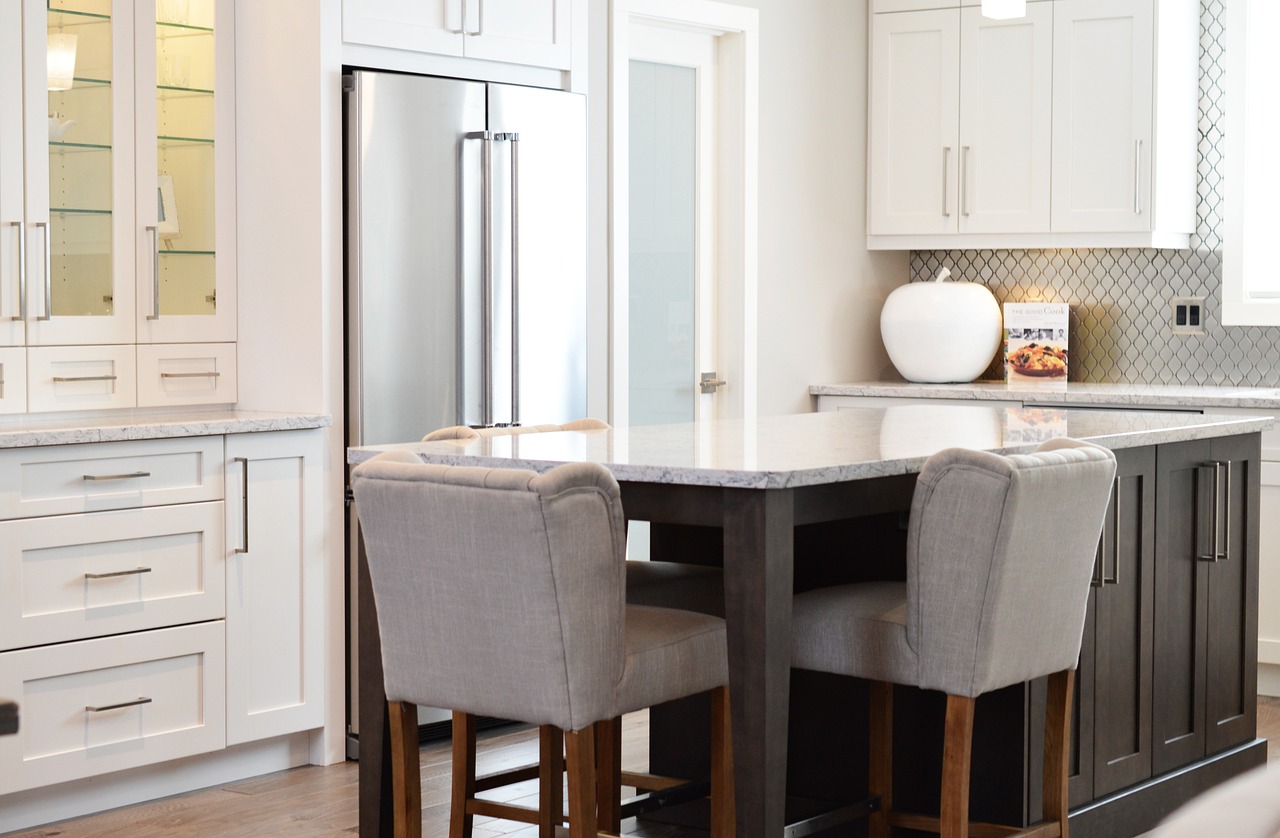When planning an outdoor kitchen build, it’s essential to consider key steps in the process. In a video by BBQGuys, the Watson family’s outdoor kitchen build is showcased, highlighting crucial aspects such as planning for the space, choosing equipment, and running utilities. From sketching the layout to installing the grill and plumbing, each step is carefully outlined to ensure a successful outdoor kitchen project.
The Watsons’ outdoor kitchen features an eight-foot island with a gas grill, fridge, and sink, emphasizing the importance of proper planning and measurements. With brick walls and a granite countertop, the build showcases the use of non-combustible materials and the significance of aligning equipment specifications with construction. From venting for safety to connecting utilities and installing access doors, the Watson family’s kitchen build exemplifies a well-thought-out and meticulously executed outdoor kitchen planning process.
Planning For the Space
When it comes to planning for your outdoor kitchen, the first step is to decide on the layout. Consider the available space you have and envision how you want your kitchen to look. Think about the size of the island, the placement of appliances, and any additional features you may want to include.
Measuring the available space for the outdoor kitchen is crucial to ensure that everything fits properly. Take accurate measurements of the patio or designated area where the kitchen will be built. This will help you determine the size of the island, the placement of appliances, and any other structures you plan to incorporate.
Choosing Your Equipment
Selecting the necessary outdoor kitchen appliances is an exciting part of the planning process. Consider the type of cooking you enjoy, whether it’s grilling, smoking, or baking. Choose appliances that fit your cooking style and needs, such as a grill, refrigerator, sink, and storage cabinets.
When choosing your equipment, consider the essential features that each appliance should have. Look for durability, ease of cleaning, energy efficiency, and any special functions that may be important to you. Make sure to select appliances that are suitable for outdoor use and can withstand different weather conditions.

Sketch the Outdoor Kitchen
Creating a visual representation of the outdoor kitchen layout can help you see how everything will come together. Sketch out the placement of each appliance, countertop, and storage space. This will give you a clear idea of the design and help you make any necessary adjustments before construction begins.
Determine the placement of each appliance and countertop based on your sketch. Consider the flow of work in the kitchen, making sure that everything is easily accessible and functional. Take into account the space needed for movement and cooking to ensure a smooth culinary experience.
Running the Utilities
Hiring licensed professionals to install the water, gas, and electricity lines is essential for the safety and functionality of your outdoor kitchen. Ensure that the utilities are properly placed for easy access and connection to the appliances. This will prevent any future issues and make maintenance easier.
Make sure that the water and drain lines for the sink are installed correctly and have sufficient water pressure. Check that the gas plumbing connections are secure and leak-free by having a professional handle the installation. Ensure that the electricity lines are properly set up to power all the appliances without overloading the system.

BBQ Island Construction
Choosing the materials for building the island structure is an important step in the construction process. Consider using non-combustible materials such as brick or stone for the walls and a durable countertop material like granite. Follow the manufacturer’s guidelines for construction to ensure a safe and sturdy island.
When building the island, pay close attention to the specifications of the equipment you choose. Make sure to reference the manufacturer’s cutout dimensions to ensure a proper fit for each appliance. Have all the equipment on-site for the installer to confirm measurements and make accurate cuts during construction.
Built-in Grill Cutout
Measuring the grill cutout based on countertop thickness is crucial to ensure the proper installation of the grill. Measure from the top of the countertop to determine the height at which the grill should rest. Allow for proper ventilation and clearance to prevent any safety hazards.
Ensure proper ventilation for the grill installation by following the grill manufacturer’s guidelines. Check for any specific requirements for combustion air and clearance underneath the grill. Make any necessary adjustments to the cutout to accommodate these specifications for a safe and efficient grill setup.

Connecting the Plumbing
Attaching the water and drain lines for the sink should be done carefully to prevent any leaks or malfunctions. Secure the gas plumbing connections by a professional to ensure safety and compliance with regulations. Double-check all connections before moving on to the next steps of construction.
Perform a leak test using soapy water spray to check for any gas leaks in the connections. Spray the soapy water on all the gas plumbing connections while the gas is turned on, and look for bubbles that indicate a leak. Address any leaks immediately to prevent any safety hazards.
Check for Gas Leaks
Performing a leak test using soapy water spray is a simple yet effective way to check for gas leaks in your outdoor kitchen. Spray the soapy water on all the gas connections, including fittings and valves, with the gas turned on. Watch for bubbles that indicate a leak and address any issues promptly.
Checking for gas leaks is important for the safety of your outdoor kitchen and everyone using it. Make sure to conduct regular inspections, especially after any maintenance or construction work, to ensure that all connections are secure. Stay vigilant and address any leaks immediately to prevent any accidents.

Venting Your Island for Safety
Installing safety vent panels at the appropriate location is vital for proper ventilation in your outdoor kitchen. Consider the type of fuel you are using (natural gas or propane) and install the vent panels accordingly. Proper ventilation will help prevent any gas build-up and ensure a safe cooking environment.
Ensure that your island has adequate ventilation for the grill and other appliances to prevent any potential safety hazards. Plan the location of the vent panels carefully to optimize airflow and gas dispersion. Maintain proper ventilation to create a safe and comfortable cooking space for you and your guests.
Conclusion
Reflecting on the successful completion of the outdoor kitchen project, you can take pride in the hard work and planning that went into creating your dream kitchen. Enjoy the outdoor cooking experience and entertain friends and family in a beautiful and functional space. If you need further assistance or have any questions, feel free to contact the experts at BBQGuys.com for guidance and support. Create lasting memories and delicious meals in your outdoor kitchen, built with care and attention to detail.

